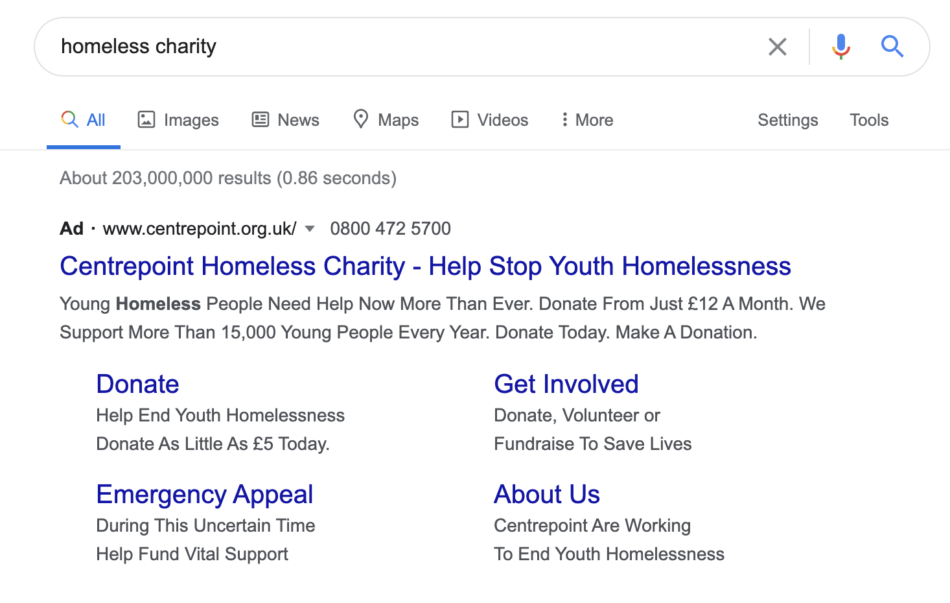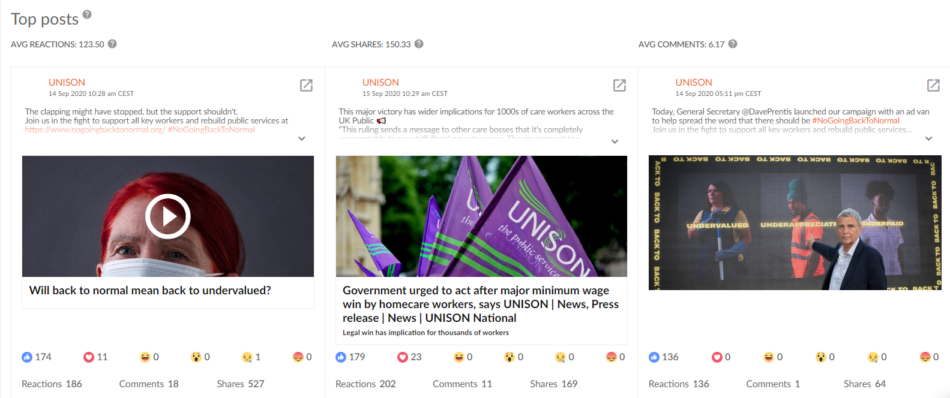There’s no denying the fact: that marketing is vital for nonprofits. Whether a charity needs to raise important funds, improve awareness of a cause, or encourage local people to volunteer, marketing is the answer. It’s a huge driving force behind donations, and it can be incredibly powerful when it comes to shaping public discourse and making an issue known.
But there’s a problem. Nonprofits tend not to have huge budgets at their disposal, and that means that teams need to be a little smarter when it comes to planning and executing their digital strategies. And many of the best-known nonprofits are doing exactly this, embracing creativity and ingenuity to create powerful marketing campaigns that demand attention, without ever breaking the bank.
Interested in learning more about how your nonprofit could make the most out of every marketing opportunity? Read on and we’ll divulge a few of the industry’s tried and tested secrets.
Digital Marketing for Charities
The 2020 Donations Report from goDonate by WPNC recently highlighted the importance of digital marketing strategies for charities. Nonprofits surveyed for the research included the likes of NSPCC, Battersea Dogs Home and Prostate Cancer UK, each of which had some interesting statistics to share on the success of their own digital marketing drives.
Prostate Cancer UK reported that a quarter of all regular donations to the charity are now made via digital wallets. Battersea Dogs Home saw a 35% increase in income when it trialled a new site with an improved user experience, when compared with its existing online journey. The UK’s leading children’s charity NSPCC found that by improving its online journey, it saw a 90% reduction in online enquiries and questions relating to problems with donations.
The findings shared in this video demonstrate just what can be done when nonprofits take advantage of the potential of digital marketing strategies. Take a look at some of the following strategy ideas to learn more about how digital communication ideas can pave the way for growth in the charity sector.
The Right Digital Marketing for Nonprofits
Digital marketing is now essential to the success of the vast majority of nonprofit organisations, and that’s particularly true given the current climate. With the pandemic putting a halt to all kinds of fundraising events, charities are having to think outside of the box to encourage donations and boost community support.
Many fundraising opportunities are now moving online, and charities are making the most of a whole host of exciting cause marketing opportunities designed to draw attention to their mission. Software platforms such as Virtuous, a CRM designed specifically for nonprofits, can be invaluable in managing these new forms of online engagement. By providing the necessary tools and analytics to track donations, cultivate relationships and increase reach, Virtuous offers an integrated approach for a more efficient and effective digital marketing strategy.
Take a look at the following popular marketing ideas to see whether your organisation could benefit from the introduction of a new digital strategy.
Champion real stories
Video is an enormously emotive marketing tool, and it works particularly well for nonprofits. There’s a simple reason for this. Nonprofits are driven by passion, and headed up by people who really believe in what they’re doing. Behind every charity is a worthy cause, and plenty of inspiring stories to be told. Stories that easily translate into powerful videos that command attention.
Champion real stories to show your audience what your charity does, and why it matters. Use videos to raise awareness through social media, and share via email marketing campaigns. Make sure those real stories that are the very reason for your charity’s existence are well known, and well understood. Shout them from the rooftops, and people will listen.
- Speak to those who use your charity’s services, and get teams talking about the most powerful stories they’ve heard.
- Select a few stories and plan short videos designed to evoke an emotive reaction.
- Film your stories, and edit them to ensure they deliver a punchy, powerful message.
- Share your video content far and wide to start conversations about your nonprofit.
Men’s health charity Movember is well known for its creative digital marketing campaigns, and its video content is exceptional. The charity makes full use of the opportunities that video presents, using it to raise awareness of important issues relating to men’s health. The following film, featuring a survivor of the Humboldt Broncos bus crash in Canada, discusses mental health in the wake of a heartbreaking tragedy.
As you can see in this example, the charity has used a compelling format to share a real story that showcases just how important the work it does really is. The video has been designed to motivate viewers to support the organisation’s work, by putting real stories in the spotlight.
Take advantage of Google Ad Grants
Google is offering a helping hand to nonprofits struggling to make their voices heard in online searches. The technology giant provides qualifying non-profits with $10,000 USD in Google Ad grants, every single month. Check if your nonprofit qualifies for the monthly grant, and make sure you take advantage of it if it does.
Using Google’s ad grants, cash-strapped charities can start to showcase their organisation in popular searches and direct more traffic to their sites. If the user journey is good from then on, this increased traffic should quickly translate into better awareness of the cause in question, and a subsequent uptick in donations and volunteering requests.
Step 1: Check if your organisation is eligible for Google Ad Grants.
Step 2: If it is, register for the grant online.
Step 3: Plan your PPC campaign to make full use of your new monthly Google ads budget.
Step 4: Keep an eye on Google Analytics to find out what’s working, and what you can improve on going forward.
A vast number of charities are already using PPC advertising from Google, focussing on popular search terms that relate to their cause. Take a look at the following example where we can see the term ‘homeless charity’ has been used by Centrepoint to direct searchers straight to its homepage, as well as pages relating to volunteering, donations and its current emergency appeal.
 Make the most of virtual events
Make the most of virtual events
Events were once a highly profitable fundraising channel for nonprofits, but the recent coronavirus pandemic has stopped many of the world’s best-known events in their tracks. However, this doesn’t mean that the opportunities of events are completely closed off to nonprofits. It just means that organisations are having to be a little more creative with their event ideas.
Growing numbers of conferences, exhibitions and networking events are now moving to an online format, and this could be beneficial for nonprofits. Charity spokespeople, sponsors and volunteers can now speak passionately about their cause to online audiences, at virtual events that are accessible to interested audience members all over the world. Many charities are now getting involved in these events, and some are even hosting virtual events of their own.
Speaking at a virtual event
Step 1: Research virtual events that might appeal to your target audience. Look out for events with relevant sponsors, and virtual conferences on ideas that line up with your charity’s mission.
Step 2: Apply for speaking roles at virtual events or speak to organisers about other ways in which your organisation might be able to get involved.
Step 3: Deliver a passionate and powerful presentation to your virtual audience and direct interested audience members to your website for more information.
Planning a virtual event
There are various guides on how you can plan a virtual event, but here’s the summary of how you can plan one yourself:
Step 1: Read up on virtual events that have recently been delivered for nonprofits and look for inspiring ideas that you could make your own.
Step 2: Think of a target for your event. This might be an amount of money you’d like to raise, or a simple goal like improving awareness of your cause.
Step 3: Plan your virtual event and start to promote it using your existing digital marketing channels.
Step 4: Gather plenty of images, video content and participant feedback during the event itself to be used to help promote future virtual events for your organisation.
East Anglia Children’s Hospice recently delivered a showstopping virtual event aimed at raising funds for the important work it does. The virtual balloon race used an eco-friendly simulation, and participants could take part from as little as £3. Those taking part could then customise their virtual balloons, and track its progress over the seven-day race.
Be social
Social media campaigns and social media management strategies are already being put to great use by charities all over the world, but they really come into their own when there’s a powerful digital marketing strategy behind them
To make the most of your social channels, plan tailored digital strategies and design a bespoke social campaign aimed at achieving the goals of each of these. Make full use of all social channels your charity uses, and try to engage audiences using an omnichannel approach.
Here are the steps that you can take to start utilizing your social media channels effectively to reach more people:
Step 1: Plan social media campaigns using compelling content designed to encourage sharing and engagement.
Step 2: Examine your analytics reports to learn when your audience is active, to ensure content is being posted at the optimum times.
Step 3: Share tailored content across all of your nonprofit’s social channels.
Step 4: Promote particularly important updates to put your best content in the spotlight.
Step 5: Engage with audiences on every channel and keep the conversation flowing.
Step 6: Check analytics at the end of a campaign to see which content interested viewers the most, and find out which content performed best in terms of engagement.
This can be done through tools like Sotrender, where you can connect your social media profiles to analyse your audience demographics, engagement, reach, and top posts. If you’re in a rush, you can quickly have your results summarized in a report and discuss the results with your marketing team.
Here’s an example of how you can quickly find your best posts in a given period of time.
If you feel that certain messages are particularly powerful, or deserve more than the usual levels of attention, then it may be worth promoting these updates using some of your marketing budget. Remember, social media is a key driver behind web traffic and digital donations for nonprofits, so it’s often a good investment no matter how stretched budgets happen to be.
UK Charity Breast Cancer Now is currently running a campaign aimed at restarting the important areas of work that have been paused due to the pandemic. The campaign, which is running across the charity’s social channels, is drawing attention to the fundraising, research and campaigning that has been missed as a result of coronavirus.
Embrace the power of digital marketing
The best digital marketing strategies can be incredibly effective in raising funds and awareness – and many don’t require a huge marketing budget to begin with. For nonprofits, digital marketing campaigns present incredible opportunities to spark conversations, change mindsets and encourage donations, all of which couldn’t be more important to passionate charities determined to change the world. Start exploring the potential of digital campaigns and your charity could soon benefit.










